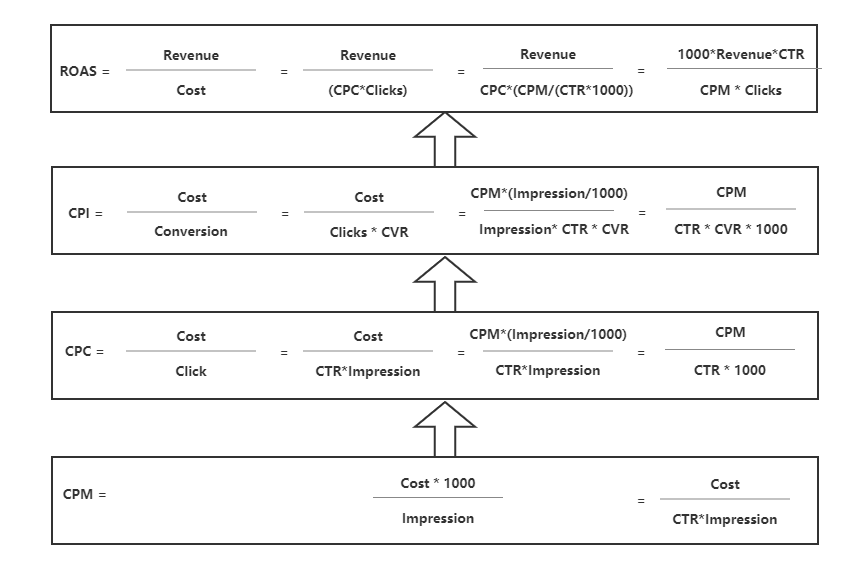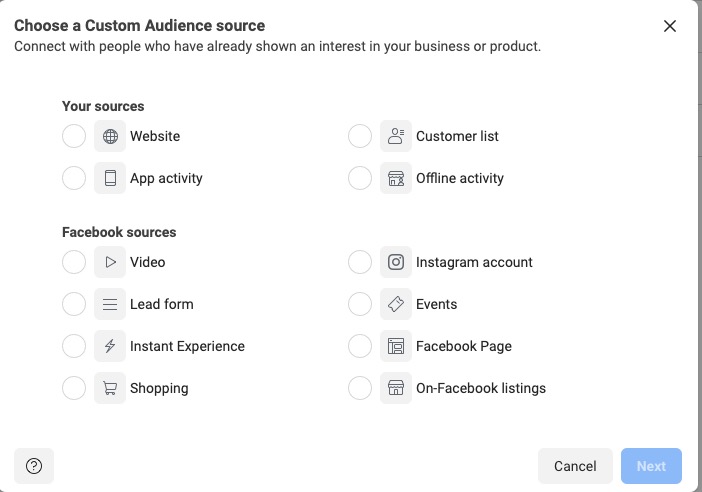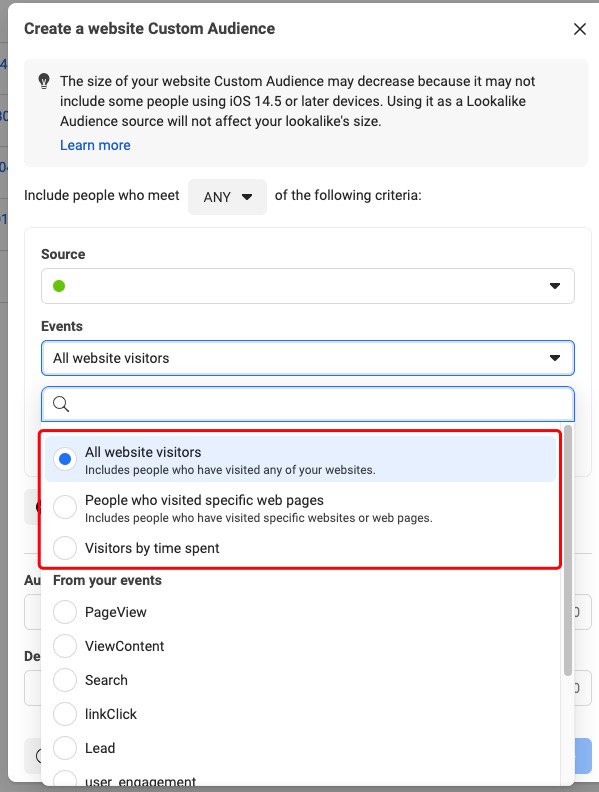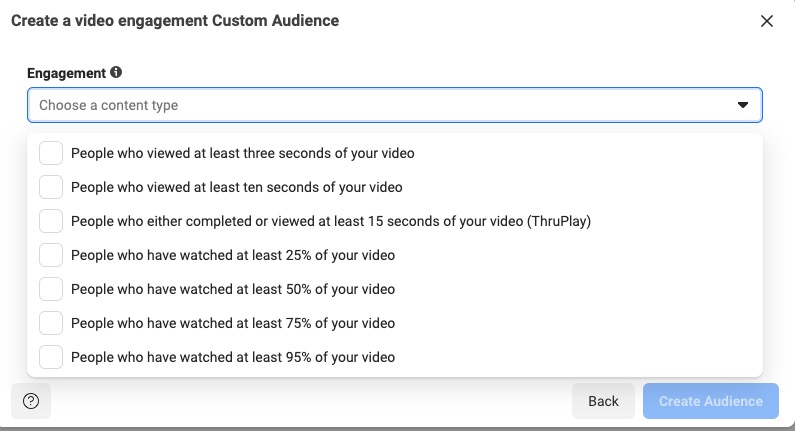Table of Contents (Click to show/hide)









How To Make An Effective Paid Social Remarketing Strategy
Remarketing can be incredibly effective if done correctly. It gets your company in front of the people who already have a stake in it, who already care about what you have to say. This means they’re more likely to convert, and you’re more likely to see your sales soar.
Remarketing focuses on targeting people who’ve already seen your site through key ad placement. To remarket effectively, you’ll need to identify issues with your strategy, make and consolidate lists for remarketing, and implement these lists in an understandable structure.
Here’s what you need to know about making an effective paid remarketing strategy.
Paid Social Remarketing Campaign Strategies
In 2017, I wrote an article about how to create integrated marketing communication in the gaming industry. I mentioned that capturing value is the ultimate step for achieving my goal.
However, according to the AIDA model, customers often go through some engagements before taking action. With that in mind, re-engaging with the customers ensures retention, and it’s proven to be a cost-effective way to capture value. Therefore, this article will discuss some practical remarketing ideas in paid social to guarantee a winning strategy in securing the lower funnel.
Facebook is the OG of paid social. Its versatility and resourcefulness allow you to reach customers effectively. As such, getting in touch with the customers who previously have interactions with your social properties becomes easier & less expensive.
We all know that Facebook is not the best platform that provides accurate targeting to help your narrow the campaign focus. But there are some ways where you can try and create a personalized ad experience for your prospects. But what are the benefits exactly?
What's Remarketing?
Technically we should call it "retargeting" in this article. Retargeting uses advertisements to re-engage potential customers who visited your website or social profiles but have since left or disengaged. If remarketing is using your first-party application for engagement. The key is the audience. Knowing who is the audience will help you connect both remarketing and retargeting.

What Are The Benefits?
There are many benefits to remarketing your brand, but the highlights include:
- The audience in the remarketing list is highly likely to convert.
- With high CTR & CVR, your CPC is expected to get lower. CPA=CPM/(CTR*CVR/1000)
- Secure your retention & prospects in case they turn to your competitors in the final stage.

Clearly, remarketing is a vital strategy. Let’s talk about some of the ways you can leverage Facebook to reach your target audience.
Social Media Retargeting Audience Ideas
It goes without saying that it needs to be practical and reachable based on the current offerings. Remarketing is more than just targeting everyone who visited your site. Here are eight ways you can segment remarketing audiences for better performance:
- Website Visitor
- Social Properties Interactions
- UTM Parameters Interactions
- Visitors by Time Spent
- Past Converters
- Offline Interactions
- Ads Engagements
- Dynamic Remarketing

Our key here is to determine the best combination of campaign targeting & Ad messages to ensures the highest conversion rate among the audiences mentioned above.

Defy Your Campaign Structure
Machine Learning and Smart Bidding help marketers to connect the dots that human beings can not see. We need to trust the algorithm and provide a large sum of data for its ultimate optimisation.
In my article How To Optimise Your Facebook Ad Structure, I mentioned that simplification is the key. Although marketers know how to create a full-funnel structure to cover all the bases, there is still a lot to discuss to qualify your funnel targeting. Here are the 3 steps to find the best targeting for remarketing.
Use This Formula To Define Your Audience Size
Many people find it difficult to define a good size for their Facebook ads. If you’re one of them, I want you to think about the number of people you can actually reach with your budget.
Let me explain this further.
The average cost per 1,000 impressions (CPM) is $35.00 and it typically takes seven touches to get someone to take action.
This is called the rule of seven – which says your ideal customers need to see or hear your message at least seven times before they decide to do business with you.
This means they need to be served or get value at least seven times from your content.
Now, let’s say your audience size is 20,000. If you have to show your ad to 20,000 users seven times, how much will it cost?
20,000 (audience size) x 7 (touches) = 140,000
140 x $35.00 (avg. CPM) = $4,900
If you choose to go with an audience size of 200,000, it would cost you $49,000.
Be sure to consider your budget when setting up ad campaigns on Facebook.
Step #1 Get Your Remarketing Lists Ready
The very first thing you need to do when running through remarketing/retargeting campaign is to make sure that you have comprehensive, multi-facet audience lists ready to target deeper and deeper into your sales or influence funnels.
I have been encountered many businesses & marketers missing out on the opportunity by forgetting to build the lists. So here are the lists that you can create in your Facebook, hence your other paid social channels:
Website Remarketing List
- Website visitor (1 day, 7 days, 14 days and 31 days)
- Cart abandoners (1 day, 7 days, 14 days and 31 days)
- Specific page(products, pricing, categories) visitors (1 day, 7 days, 14 days and 31 days).
Creating custom audience lists based on user activities is an effective way to make personalised ads. I always try to segment the audience into three dimensions: timely, interest and behaviour. If you look at the chart above closely, you will find the audience lists always follow the three dimensions rule. In addition, I highly recommend segmenting the audience list based on the page content. For example, if you are running a bedding/furniture business, you should have the audience lists based on product type (i.e. Mattress Product Viewers, Bed Frame Product Viewers etc) This is a good way to do a cross-sale or upsell campaign.

Social Media Properties Remarketing:
- People that have engaged with your content.
- People that have visited your social page.
- People that clicked a CTA (Facebook only).
- People that sent you a message.
- People that saved your page or posts.
- Everyone that engaged with your page (which would include all of the above).
Social media engagement should be also included in your re-marketing strategy. It’s no secret that most social platforms operate on a pay-to-play model for brands. The average reach of an organic post on a Facebook Page hovers around 5.20%. That means roughly one in every 19 fans sees the page’s non-promoted content. With that in mind, people who engage with your social media content are highly likely to convert. While the audience list can be small, I would recommend using all lists together in one campaign in order to make the retargeting work.
Ad Engagements Retargeting:
- Video views (20%, 50% and 95% of watch time)
- People who have engaged with upper-funnel campaigns
- People who have engaged with middle-funnel campaigns
- People who have engaged with lower-funnel campaigns.
Personally, I like to create video view engagements as my upper funnel audience list and use it for my middle funnel campaign. You might be wondering - Facebook or Instagram doesn't offer the option to create campaign-based video view audience lists, how can you create the lists for different funnels? That's the magic of UTM. You can make your campaign naming convention include keywords like "upper funnel" or "middle funnel", then utilise Google Analytics to create audience list based on utm_campaign. Moreover, a lot of CRM tools allows you to identify users based on the first URL they land on your website. You can export that list and create a custom audience.

Past Converters Retargeting:
- Completed lead gen forms
- Past Converters
- Offline event converters
Serve ads that feature new or complementary products from those who have already purchased. The past converters are highly likely to be your loyal/return customer. I won't enclose too many details on this because this is a standard media retargeting strategy.
Instant Experience & Facebook Shop:
- Viewed your shop.
- Viewed products (or you could further qualify by targeting people that viewed and clicked through to your website).
- Saved products.
- Added to cart.
Cross-Channel Remarketing Lists (Recommended)
- Leverage your UTM tag to create audience lists from other channels and import them. For example, if you have utm_source=facebook tracking parameter in your Facebook campaigns, you can build an audience list based on this parameter in Google Analytics and push it to Google Ads.

Step #2 Consolidating Remarketing Lists
Now we have the audience lists ready, it's time to think about the campaign strategy. While there are many segments to test & run, it's important to consolidate the audience lists to ensure the optimal data set and exit the learning phrase quickly. Here are the four rules when I make my remarketing campaign:
- Target large segmentation and aim for exiting the learning phrase as soon as possible.
- Test the audience at the ad set level instead of at the campaign level.
- Exclude all the past converters.
- Consider the possibility of cross-sell & up-sell among the past converters based on the nature of products.
Step #3 Set A Structure That Covers Every Audience
Once you have your lists, it’s time to use them. Here are some of the structures I recommend for eCommerce business:

Make Remarketing Campaigns Work For You
There may be some strategies you haven’t tried yet here or some audiences you didn’t think to reach. That’s okay! Take your site’s architecture and the buyer's journey into account. Monitor audience volume to see how much it builds up, and plan your ads accordingly so that you can test them once you have enough people to target.
Remarketing can work for you and your brand if you’re diligent and effective in your strategy.
Get More Advice on Facebook Ads
- How To Make An Effective Paid Social Remarketing Strategy
- How to Optimise Your Facebook Ad Structure
- How To Choose the Right Facebook Ad Objective for Your Goals









